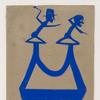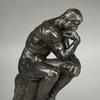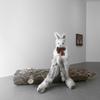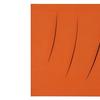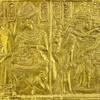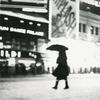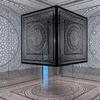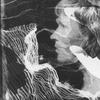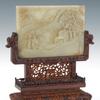Artists use Algorithms, A.I. and Advanced Technology in The Robot Show at MOAH
- LANCASTER, California
- /
- August 06, 2018
The Robot Show at the Museum of Art and History in Lancaster, Calif., is comprised of eight exhibitions exploring the place robots, and other forms of artificial intelligence, have in a contemporary social landscape – from popular culture to nature and spirituality. Featured in the Main Gallery at MOAH is a retrospective of Emmy-nominated artist and animator, Dave Pressler. The Robot Show also showcases the solo exhibitions of Jeff Soto, Patrick McGilligan, Robert Nelson and Karen Hochman Brown, with site specific installations by artists Cristopher Cichocki, Alexander Kritselis, and Chenhung Chen. The exhibition is on view through September 26, 2018.
Robert Nelson is encouraging viewers’ Awakening in his new exhibition, a part of The Robot Show. Using a vivid palette, mixing pop and surrealist styles, Nelson juxtaposes images that play with deep, edgy ideas of technology. The artist poses the question as to whether the ease of technology use will lead to great good or great evil, and wonders whether in the end, technology will destroy us or save us.
“Awakening for us is an ongoing, never-ending process,” Nelson explains. “What of our creations? Is the capacity there for an awakening, and if so, what does that mean? Will it be in our image or from their own design?”
In this series, he posits that an awakening for our technological creations could result in a transcendence that will surpass what human beings can obtain. For the artist, humanity is not necessarily the end goal of evolution.
Posing these questions, Nelson uses images taken from the Renaissance, while employing a retro-future imagery, leading viewers to explore the compression of time as well as the potent potential of technology.
Throughout Awakening, Nelson’s vibrant colors and delicate, detailed compositions lend themselves to an intimate contemplation of provocative questions. “Why would these beings be like us in any way? We could merely be a step in the evolution to create this artificial intelligence and allowing it to awaken.”
The centerpiece to Nelson’s exhibition is “Pandora’s Child,” a triptych that features a stunning robotic figure, arms akimbo, with a heart in its chest. On either side of the figure, two Mickey Mouse images, mouse ears partially lifted to reveal human brains and mechanical gears inside their heads, pay tribute to the central figure. Above them all, angels, flowers, plummeting planes; at their feet, the water rises, a bed of human skulls beneath the flow. A powerful image that portends both man’s destruction and the approval of Heavenly angels, the work is created in Nelson’s typically brilliant hues, with references to time past as well as the future, a future which may be – now.
With each piece, I begin by importing a photograph into a modular graphics-synthesizer program where I implement a variety of algorithms. I use polar space, fractal space, assorted modulations, reflections, waves, distortions and symmetries to achieve each layer of my digital constructs. Using this technology, I draw out the essence of my subject, placing focus on details, and developing an emotion through repetition and distortion – Karen Hochman Brown, Los Angeles
With a continual sense of discovery, Los Angeles artist Karen Hochman Brown continues her creative stride, altogether transforming nature, man-made objects, and the natural world into kaleidoscopic creations of uncanny realism. In her recently completed project with LA METRO, Hochman Brown drew inspiration from the Los Angeles Arboretum’s non-native species and surroundings like the peacock, aloe plant and train tracks. These elements were drawn into a cohesive whole which spoke to intersections between nature and history.
In the artist’s forthcoming exhibition Elementals at MOAH, Hochman Brown draws upon the elemental building blocks of life: air (AER), water (AQUA), fire (IGNUS), and earth (TERRA). Hochman Brown alternately departs from the aluminum substrates on which her works has been previously printed. The mixed media works in Elementals are custom printed charmeuse, silk dupioni and include laser cut wood, acrylic and wool. They have been designed on computer like Hochman Brown’s previous work but are presented using a combination of many techniques, tracing her history as an artist up to and including her use of a new tool, the Glowforge laser cutter. These new works are embedded with laser etched, hand painted QR codes that when activated by viewers, present interactive media such as the work’s source material and a video tracing its process of creation. The works in Elementals not only continue to push the boundaries of new media, but also highlight harmonious relationships between nature and humanity.

